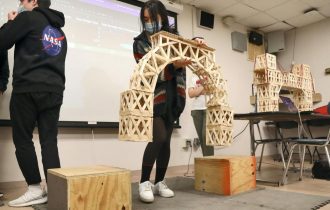Engineering the Future: How STEM Education Shapes Tomorrow’s Innovators
Introduction: Sowing Seeds for the Future
“The science of today is the technology of tomorrow,” Edward Teller once noted, emphasizing the undeniable bond between scientific exploration and technological advancement. As we venture deeper into the 21st century, the importance of Science, Technology, Engineering, and Mathematics (STEM) education is becoming increasingly apparent. Through this lens, we’ll explore how STEM education prepares students to become the innovators of tomorrow, shaping our future with their creativity, problem-solving, and technical skills. We’ll illustrate these points with real-life examples and insights on the role of modern technology in STEM education.
Section 1: STEM Education: A Launchpad for Innovation
At its core, STEM education is not just about imparting scientific knowledge or teaching technical skills. It’s about fostering curiosity, encouraging problem-solving, and cultivating critical thinking – qualities that are indispensable for innovation. STEM education exposes students to real-world challenges, prompting them to apply their knowledge and creativity to devise solutions. This way, students aren’t just learning; they are innovating, creating a fertile ground for future technological advancements.
Section 2: The Role of Technology in STEM Education
As we navigate the digital age, technology plays an increasingly pivotal role in STEM education. It transforms traditional classrooms into dynamic learning environments, fostering collaboration, exploration, and hands-on learning. Here’s how:
- Digital Simulations and Models: These provide students with an immersive learning experience, allowing them to visualize complex scientific concepts or engineering principles.
- Coding Platforms: Websites like Codecademy and Scratch introduce students to coding in an interactive and engaging manner, instilling computational thinking – a crucial skill for tomorrow’s innovators.
- 3D Printing: This technology brings engineering and design concepts to life, enabling students to create tangible prototypes and understand the design-to-production process.
- Robotics and AI: Robotics kits and AI software allow students to apply their knowledge in real-time, fostering an understanding of these cutting-edge fields.
- Online Collaboration Tools: Platforms like Google Docs or Slack encourage collaborative problem-solving, a critical component of STEM fields.
Section 3: Real-life Examples of STEM Education Fuelling Innovation
To further illustrate how STEM education shapes future innovators, let’s look at some real-world examples:
- First Lego League: This global robotics competition engages students in researching real-world problems and developing solutions. Teams design, build, and program robots using LEGO MINDSTORMS® technology.
- Project Lead The Way (PLTW): This non-profit organization provides transformative learning experiences for PreK-12 students and teachers in the US. PLTW programs, found in over 11,500 schools, empower students to develop the knowledge and skills they’ll need to tackle real-world challenges.
- Maker Faire: Dubbed the “Greatest Show (& Tell) on Earth,” Maker Faire is a gathering of tech enthusiasts, crafters, educators, hobbyists, engineers, science clubs, authors, artists, students, and commercial exhibitors. Here, ‘makers’ showcase their creations and share their learnings, inspiring more students to venture into the world of STEM.
Section 4: Encouraging STEM Education: The Path Ahead
Promoting STEM education, particularly among underrepresented groups, remains a priority. Here are some ways we can encourage more students to embrace STEM:
- Exposure to Role Models: Highlighting successful figures in STEM fields can inspire students and help them perceive these careers as attainable.
- Integrative Curriculum: A curriculum that integrates STEM with arts and humanities can demonstrate the applicability and importance of these subjects in everyday life.
- Hands-On Learning Opportunities: Providing students with opportunities for experiential learning, such as science fairs or coding competitions, can enhance their engagement with STEM.
Conclusion: STEMming the Tide of the Future
In conclusion, STEM education is crucial in shaping the innovators of tomorrow. It cultivates problem solvers, critical thinkers, and leaders who will drive technological advancement and societal progress. As Jaime Casap, Google’s Chief Education Evangelist, puts it, “We need to prepare kids for their future, not our past.” As such, let’s invest in STEM education today to ensure a brighter, more innovative tomorrow.


